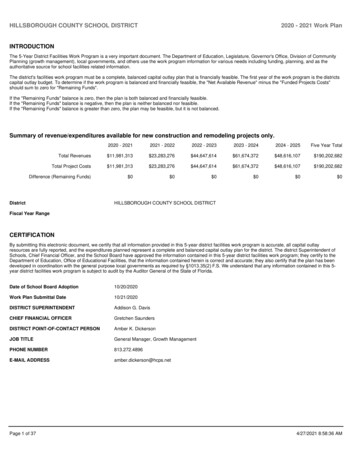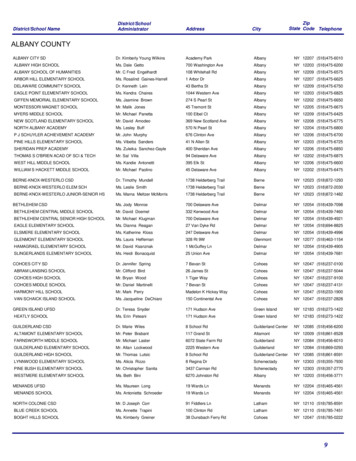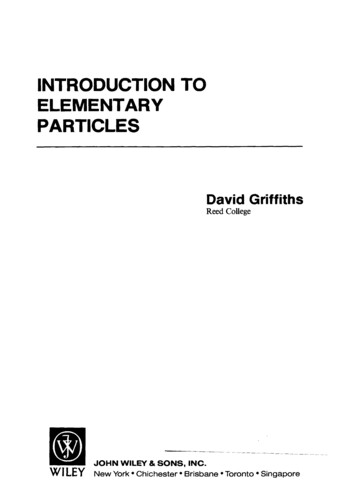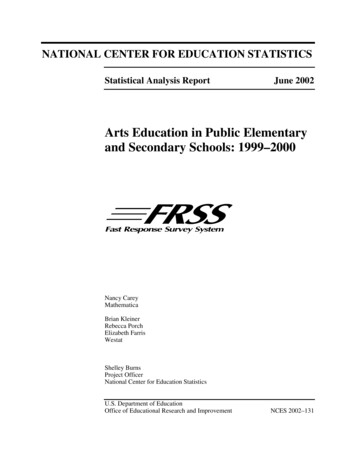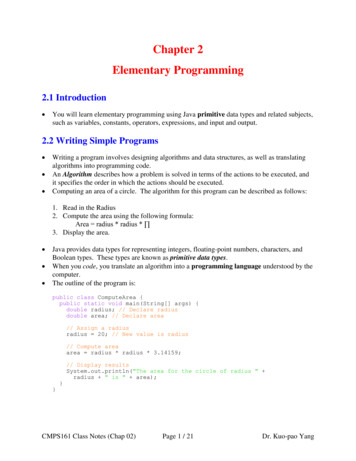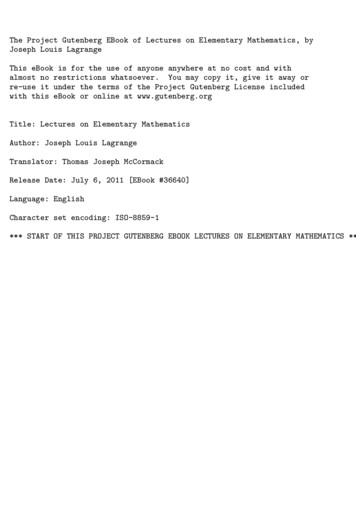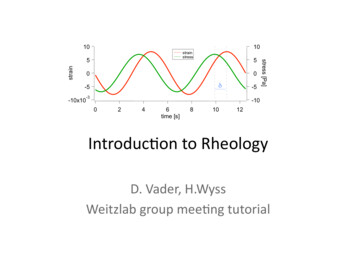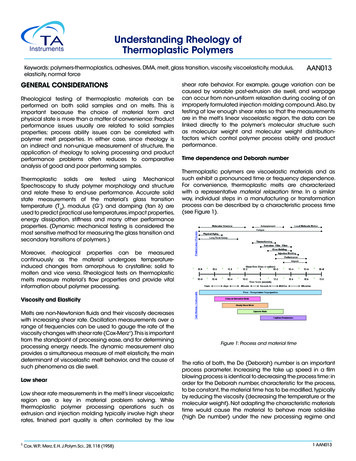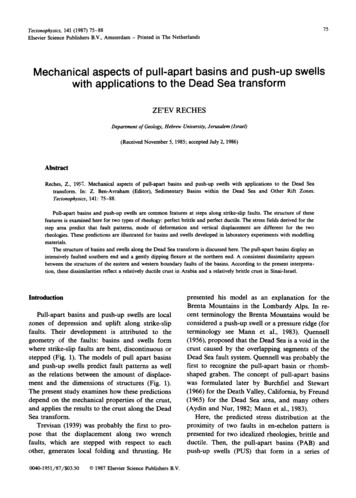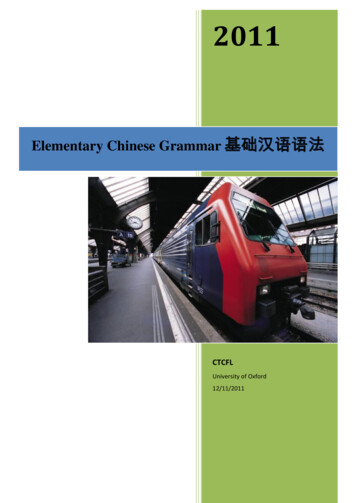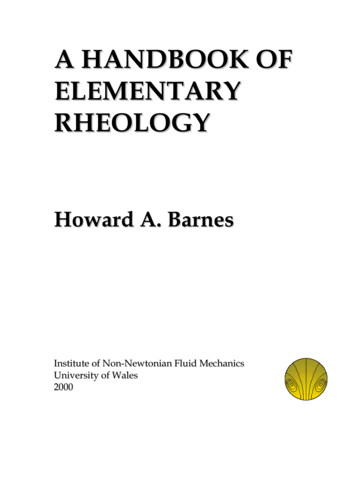
Transcription
A HANDBOOK OFELEMENTARYRHEOLOGYHoward A. BarnesInstitute of Non-Newtonian Fluid MechanicsUniversity of Wales2000
A HANDBOOK OFELEMENTARYRHEOLOGYHoward A. BarnesPrincipal Scientist, and Science Area Leaderin Rheology and Fluid MechanicsUnilever Research Port SunlightWirral EnglandUniversity of WalesInstitute of Non-NewtonianFluid Mechanics, Aberystwyth, 2000
Handbook of Elementary RheologyPublished by The University of Wales Institute of Non-Newtonian FluidMechanics, Department of Mathematics, University of Wales Aberystwyth,Penglais, Aberystwyth, Dyfed, Wales, SY23 3BZ.First published 2000 Howard A. Barnes, 2000ISBN 0-9538032-0-1Printed by Cambrian Printers, Llanbadarn Road, Aberystwyth SY23 3TNii
FOREWORD‘One of the principal objects . in any department of knowledge is to find the pointof view from which the subject appears in its greatest simplicity’, J. Willard GibbsIn an earlier book—An Introduction to Rheology—we stated that rheology is a difficultsubject. However, even though we then tried to make it as simple as possible, a number ofpeople still told us that they found the book hard going. This present book is meant to satisfythis group. For this reason, the mathematical content has been kept to a minimum, and thetext is as descriptive as possible: there are no integrals and only the occasional differentiationsymbol, with all the equations in the simple algebraic form of A B.The book is suitable as a first introduction to the subject of Rheology for any studentof science or engineering. However, having worked in industry for thirty years, I am alsotrying to meet the needs of my industrial colleagues who—often without any previoustraining in the subject of rheology—find themselves having to work on the formulation andprocessing of non-Newtonian liquids. The contents of this book are expansions of lecturesthat I have given to both these groups of people over the years, in introductory rheologycourses run by rheometer companies, training organisations and universities around theworld.Before leaving this foreword I must mention two rheologists and two rheologybooks. Dr. George Scott Blair, the ‘grand old man’ of British Rheology, was the first author toproduce a book called Elementary Rheology (Academic Press, London, 1969), written as hesaid, on Rheology, but ‘not intended for rheologists’! The present author worked in hislaboratory for a few months during a summer vacation as an undergraduate in the early1960’s. His parting words on that occasion were ‘I hope you catch the Rheology bug’. Thebug was truly caught, and this book is intended to spread the infection even further!Then, An Introduction to Rheology for me marks my gratitude to Prof. Ken WaltersFRS, one of my co-authors of that book. He introduced me to the world of theoreticalrheology as a postgraduate student at the University of Wales, Aberystwyth and therebygave me of a wide appreciation of most aspects of rheology. Over 5000 copies of AnIntroduction . have now been sold and this present book has been written, in effect, as anintroduction to An Introduction . .This book is offered in the spirit of Skovoroda, the 18th century Ukrainianphilosopher who said that ‘We must be grateful to God that He created the world in such a way thateverything simple is true and everything complicated is untrue’.My special thanks go to members of the Institute of Non-Newtonian Fluid Mechanicsfor reading through the manuscript and making useful suggestions—dioch yn fawr!Port Sunlight, January 2000iii
Handbook of Elementary RheologyA BRIEF GUIDE TO THE HANDBOOKThe handbook begins with a short introduction (chapter 1) to the viscosity ofeveryday liquids, and shows the way in which rheology interacts with in-usesituations which most of us come across in everyday life at home and work. Then afew chapters follow on the explanation of the different kinds deformation (chapter 2);the use of graphs in general (chapter 3), and rheology graphs in particular (chapter 4).A consideration of the simplest kind of liquid that we will meet comes next – theNewtonian liquid (chapter 5), and we then show how we can calculate its flowbehaviour in lots of simple geometries (chapter 6).Two chapters cover rheology measurement (chapters 7 & 8), thus equipping usfor non-Newtonian behaviour in liquids. A discussion of such liquids—where theviscosity varies with shear rate (or shear stress)—then follows (chapters 9 & 10), witha special section devoted to very shear-thinning liquids that appear to have a yieldstress (chapter 11). To complete this part, we discuss the flow, i.e. creep, of solids(chapter 12) under long-term stress.Viscoelastic behaviour is then covered (chapters 13 and 14), first linearviscoelasticity with its manifestations in the time and frequency domain . Then nonlinear displays of viscoelasticity are introduced, these effects being usuallyencountered in steady-state flow, where overt normal-force effects such as theWeissenberg rod climbing and the extrudate-swell phenomena are seen.The origins of viscous and viscoelastic behaviour are then investigated forsuspensions (chapter 15) and polymer systems (chapter 16), showing the importanteffects of colloidal interactions. Extensional (or stretching) flow results in a verydifferent interaction between microstructural elements such as rods and coils and thesurrounding stretching flow field, and this results in very divergent behaviourcompared to shear flow (chapter 17).Two applied areas are then covered, first the rôle of rheology in the surfactantsystems (chapter 18) found in so many everyday products, and then we give a shortoverview of the rheology of food systems (chapter 19).For those interested in buying journals or books on the subject of rheology, anextensive list is given (chapter 20). The last chapter (chapter 21) considers the growingimportance of computing in rheology, where one can now predict the flow ofviscoelastic liquids in complex geometries.The book concludes with an Appendix which covers the area of on-line orprocess viscometry, which although not of great interest to all readers, isnevertheless very important to some.Note:Where possible useful Internet websites are referred to in the text, but readers are encouragedto explore such possibilities for themselves, starting athttp://www.ncl.ac.uk/rheology/esr/ (lots of o.ukiv
ContentsCONTENTSFOREWORD AND GUIDE iii1. THE VISCOSITY OF LIQUIDS - SOME SIMPLE IDEAS1.1 Introduction . 11.2 Rheology, packaging and product delivery . 21.3 Where Rheology is important . 22.WHAT IS FLOW AND DEFORMATION?2.1 Introduction .2.2 Shear rate and shear stress .2.3 The range of shear rates .2.4 Basic dimensions and units 2.5 Everyday Rheology units 3. HOW TO INTERPRETE GRAPHICAL DATA3.1 Introduction .3.2 Logarithmic plotting 3.3 Different ways of plotting the data .3.4 Plotting start-up .3.5 Long-distance running 3.6 Other running regimes 3.7 Summary 56679111112131414154. DRAWING RHEOLOGICAL GRAPHS4.1 Introduction . 174.2 Figure legends . 175. THE NEWTONIAN LIQUID5.1 Introduction .5.2 Viscosity 5.3 Viscosity of common Newtonian liquids .5.4 The variation of Newtonian viscosity with temperature .5.5 The effect of pressure on viscosity .5.6 The everyday perception of viscosity 5.7 The limit of Newtonian behaviour .References .6. SOME EQUATIONS FOR THE FLOW OF NEWTONIAN LIQUIDS6.1 Introduction .6.2 Flow in rotational viscometers 6.2.1 Narrow-gap concentric cylinder geometry .6.2.2 Small-angle cone-and-plate geometry 6.3 Flow in straight pipe circular pipes 6.3.1 Velocity profile and pressure drop in fully developedlaminar flow in a tube . .6.3.2 Flow from large reservoirs into small tubes .6.3.3 Filling a tube with constant suction 6.3.4 Tube emptying under a constant pressure 6.3.5 Flow through a packed bed of spheres in a tube 6.4 Spheres falling in Newtonian liquids 6.4.1 An isolated falling sphere 6.4.2 A falling/rising cloud of spheres 6.4.3 A sphere rolling down an inclined tube 6.5 Other important flows .6.5.1 Drainage down a wall .6.5.2 Flow along a slot 6.5.3 Flow through an annulus 3132
Handbook of Elementary Rheology6.5.4 A rod being pushed into a cup filled with liquid .6.5.5 Flow between squeezed circular plates .6.5.6 One tube moving inside another with the space between filled with liquid6.5.7 An angled plate moving across a trapped liquid .6.5.8 A cylindrical indenter being pushed into a viscous liquid .6.5.9 A disc rotating in a sea of liquid .6.6 Interaction between viscosity and density in flows 6.6.1 Flow into the entrance of a tube .6.6.2 Turbulent flow in tubes 6.6.3 The size of the liquid jet coming out of a tube .6.6.4 Stokes flow with inertia 6.6.5 Taylor vortices in concentric-cylinder flow .6.7 Some flows where surface tension is important .6.7.1 Free coating 6.7.2 Levelling of surface undulations 6.7.3 Flow up a capillary tube .6.7.4 A large bubble moving in a tube .7. VISCOMETRY7.1 Introduction .7.2 Some important things to note about using viscometers .7.2.1 Calibration .7.2.2 Artefacts .7.2.3 Wall effects .7.2.4 Evaporation .7.2.5 Sedimentation/separation 7.2.6 Chemical damage 7.2.7 Mechanical damage 7.2.8 Sampling .7.2.9 High-speed testing .7.2.10 Suspended particles .7.3 Viscometer design7.3.1 General considerations .7.3.2 Commercial controlled-stress viscometers 7.3.3 Evolution of the specifications of controlled stress viscometers .7.4 Non-simple viscometer geometries .7.4.1 Wide-gap concentric cylinders 7.4.2 The rotating parallel-plate viscometer .7.3.6 Tube/pipe viscometer 445454546464748484950508. YOUR RHEOLOGY LABORATORY8.1 What’s in a good rheology laboratory? .8.2 Which problem? 8.3 Which rheometer? .8.3.1 Standard laboratory viscometers .8.3.2 Rheometers .8.3.3 Elongational viscometers .5151525252529. SHEAR-THINNING LIQUIDS9.1 Qualitative features of flow curves 9.2 Mathematical descriptions of flow curves 9.2.1 The Cross model .9.2.2 The Bingham equation 9.2.3 The power-law equation .9.2.4 The Sisko model 9.3 Fitting models to data .5558585859606010 . EQUATIONS FOR THE FLOW OF NON-NEWTONIAN LIQUIDS10.1 Introduction 10.2 Flow in a straight circular pipe 10.2.1 Power-law liquids .10.2.2 Sisko model .63636364vi
Contents10.2.3 Casson model .10.2.4 Bingham fluid .10.3 Drainage down a wall 10.4 A sphere moving under gravity in a power-law liquid 10.5 Flow in a slit (a very wide slot) 10.6 Radial flow between parallel discs .10.7 Flow out of a tank through a long exit pipe .10.8 Flow of a power-law liquid between squeezing plates .10.9 Flow through a converging nozzle .10.10 Levelling of surface undulations under the action of surface tension .10.11 A disc rotating in a power-law liquid .10.12 More formulas for liquids with an apparent yield stress 10.12.1 Flow in a mixer .10.12.2 Wide-gap concentric cylinders 10.12.3 Capillary rise for a yield stress liquid References .6464656566666667676868696969707011. VERY SHEAR-THINNING OR ‘YIELD - STRESS’ FLUIDS11.1 Introduction .11.2 The history of the ‘yield stress’ .11.3 Values of yield stress .11.4 The arrival of commercial controlled-stress rheometers .11.5 The vane geometry .11.6 Some flow equations with yield stresses .References .7172737474757612. THE FLOW OF ‘SOLIDS’12.1 Introduction .12.2 Non-linear ‘viscosity’ of solids .12.3 Conclusion References .7778797913. LINEAR VISCOELASTICITY AND TIME EFFECTS13.1 Introduction 13.2 Mechanical analogues of viscoelastic behaviour .13.3 Measuring linear viscoelasticity .13.3.1 General .13.3.2 Creep tests 13.3.3 The behaviour of model materials in creep tests 13.3.4 Oscillatory tests – or mechanical vibrational spectroscopy .13.3.5 Oscillatory tests with a Maxwell model .13.3.6 Double or multiple Maxwell models in oscillation 13.3.7 Oscillation with a Voigt model .13.3.8 The oscillatory response of real systems .13.3.8.1 Viscous/terminal region – simple Maxwell behaviour .13.3.8.2 Polymer systems 13.3.8.3 Dispersions .13.4 What can we get from oscillatory data? 13.5 The relationship between oscillatory and steady-state viscoelastic parameters .13.5.1 General considerations .13.5.2 Creep versus oscillatory testing .13.5.3 A simple link between creep and oscillatory parameters 13.6 Non-linear response in oscillatory testing 13.7 Using oscillatory data to monitor curing, and rebuilding after shear .13.8 Stress-relaxation testing 13.9 Start-up experiments References 0310410514. NON-LINEAR VISCOELASTICITY14.1 Everyday elastic liquids 10714.2 Some visible viscoelastic manifestations 10814.3 The proper description of viscoelastic forces . 110vii
Handbook of Elementary Rheology14.4 The measurement of viscoelastic forces . 11114.5 Examples of first normal-stress differences 11214.6 Some viscoelastic formulas .14.6.1 General .14.6.2 Extrudate flow .14.6.3 Flow in a slightly inclined trough .14.6.4 Pressure in holes and slits .14.6.5 Inertia in a cone-and-plate geometry 14.7 Postscript – flow of a viscoelastic liquid through a contraction .References .11511511511611611611711715 . THE FLOW OF SUSPENSIONS15.1 Introduction .15.2 Viscosity of dispersions and emulsions .15.2.1 The continuous phase .15.2.2 The effect of very low concentration of suspended particles 15.2.2.1 The effect of the continuous phase .15.2.2.2 The effect of the disperse phase .15.2.2.3 The effect of medium-to-high concentrations of particles .15.3 Particle-size effects in concentrated dispersions .15.4 Particle-shape effects in concentrated dispersions 15.5 Particle deformability 15.6 Particle interactions – an overview .15.7 The viscosity of flocculated systems 15.8 Thixotropy 15.9 Shear thickening .15.10 Apparent wall slip 15.11 Very high concentration pastes .15.12 Colloidal control of suspension viscosity .15.13 The stability of suspensions References 3713813916. POLYMER RHEOLOGY16.1 Introduction .16.2 Some of the different kinds of polymer chains .16.2.1 Long rods .16.2.2 Coils/strings .16.3 Polymer solutions .16.4 Highly branched polymers 16.5 ‘Living polymers’ or rod- or worm-like micelles .16.6 Associative polymers .16.7 A polymer solution as a standard non-Newtonian liquid .References .14114114214214414514614714814917. EXTENSIONAL FLOW AND EXTENSIONAL VISCOSITY17.1 Introduction .17.2 Where do we find extensional flows? .17.3 What’s so special about extensional viscosities? 17.4 The Trouton ratio .17.5 Some examples of extensional viscosity curves .17.6 The effect of time or extension on extensional viscosity .17.7 Other kinds of extensional flows .17.8 Viscometers to measure extensional viscosity .17.9 Commercially available extensional viscometers .17.10 Some interesting applications References .15115215315515615815916016216216318. RHEOLOGY OF SURFACTANT SYSTEMS18.1 Introduction 16518.2 Surfactant phases 16518.3 Rheology of surfactant systems 167viii
Contents18.4 Necessary rheological properties . 16819. RHEOLOGY OF FOOD PRODUCTS19.1 Introduction .19.2 Liquid-like food rheology .19.3 In-vivo flow fields .19.4 Rheology and food processing .17117217217220. YOUR RHEOLOGY LIBRARY20.1 Introduction 20.2 Rheology books in print .20.3 General Rheology .20.4 Theoretical Rheology 20.5 Polymeric systems 20.6 Blood 20.7 Food .20.8 Other specific systems .20.9 Drag reduction .20.10 Geological subjects .20.11 Proceedings of meetings (not mentioned elsewhere) 17517517517717817917918018018118121. RHEOLOGY AND COMPUTING21.1 Introduction 21.2 A brief description of how CFD works .21.3 The rheological description of a non-Newtonian liquid and CFD codes .21.4 When should CFD be used? .21.5 Some typical results of CFD calculations 21.6 A word of caution .183183184184184185APPENDIX: ON-LINE (PROCESS) VISCOMETRYA.1 Introduction .A.2 Desirable features of a good on-line viscometer A.3 Types of measurement made by current instruments .A.4 The effect of non-Newtonian viscosity A.5 Hygiene and cleaning .A.6 General comments on actual representative instruments A.7 Detailed description of a particular instrument A.8 Conclusions .References .187187189190191191192192193INDEX 195ANSWERS TO SOME EXERCISES . 200ix
CHAPTER 1: THE VISCOSITY OF LIQUIDS- SOME SIMPLE EVERYDAY IDEAS‘Everything should be as simple as possible, but not simpler’, Einstein1.1 IntroductionNo one is really an absolute beginner when it comes to rheology, because theflow properties of liquids play such an important part in our daily lives—eitherdeliberately or accidentally. This importance ranges, for instance, from the viscosityof the blood flowing around our bodies, through the thickness of the liquids that weswallow, to the grade of the oil that we put into our car engines. As consumers weare not only told that products are ‘new and improved’, but also that they are ‘thick andcreamy’, because such rheological properties are more pleasing to the eye, mouth andhand. Providing for our unmet needs as potential customers by adjusting therheology of products is an important part of the product development activity.We use many words with a rheological connotation, e.g. viscosity,consistency and texture, and they can have both positive and negative implications.Hence, while ‘thick and creamy’ might impart a positive inference; gluey, gelatinous,sticky, tacky, gooey, gummy, cohesive, could well convey the opposite idea with regardto liquids being too thick.Watery and runny might communicate the idea of dilution, since in aconsumer’s mind a liquid with a high viscosity usually conveys (or reinforces) theidea of concentration and ‘strength’, since a similar product with a lower viscositywill often pass on the idea of ‘weakness’. On the other hand, many products, ifperceived as too thick will, in the consumer’s mind, be anticipated to have problemsin ‘dissolving’, i.e. dispersing.In the context of everyday products it is a simple and useful exercise to goaround your house and garden and note the following examples of structuredliquids with interesting rheologies: kitchenbathroom cabinetgaragepantrytool shed-laundry liquids, surface cleaning liquidspersonal productsoils, greasessauces, salad dressingspaints, glues, masticsExercise 1: List other liquids with interesting flow properties, and ask ‘why havethey been made like this’?1
A Handbook of Elementary RheologyExercise 2: Obtain samples of similar products with low and high viscositiesrespectively, and carry out a small consumer test to see if viscosity isconnected with perceived ‘strength’ and concentration in the minds ofaverage consumers.1.2 Rheology, packaging and product deliveryHaving considered the consistency of a product, we now need to think aboutits packaging and means of delivery. These probably range over the followingsequence of packaging, consistency and delivery action:Packagepressure cansbottles, canstubestubsConsistencythin and wateryoilypastysoft-solid likeActionSpraySquirtSqueezeScoopExamplepaint, hair spraywashing-up liquid, oiltoothpaste, tomato pasteface cream, Swarfega3Clearly anyone interested in these areas should be thinking very carefully aboutrheology.1.3 Where rheology is importantAs well as adjusting rheology to suit consumer tastes, it is sometimesnecessary to control the rheology for specific technical reasons. Some examples thatare easily appreciated are:Slowing things down - draining on vertical surfaces- suspending particles- thickened sauces- paint, bleaches- paint, abrasive cleaners- mayonnaise.We often need a high viscosity to resist flow at the low forces posed by gravity, but atthe same time one needs a low viscosity for the same product under the high forcesexperienced in pouring, squirting or brushing.This is where the nonNewtonian viscosity varying with applied force or flow rate properties are veryimportant. Some other examples where this is true are: Hair shampoos that need to be thick enough to pour onto the hands fortransferring to the hair without flowing away through the fingers. The same isalso true of skin creams and other personal products. Toothpastes that need to be viscous enough to sit on the brush without draininginto the bristles, but at the same time are easily extruded from the tube.(However, some modern tooth-cleaning products are sold in bottles, and have amuch lower viscosity.) Thixotropic or ‘solid’ paints that have very special properties built into them sothat they appear to be solid after storing, but on brushing out or stirring, they thindown. They will then re-thicken on standing. Printing inks that need to spread easily when squeezed onto the type or transfersurface, but once deposited/printed onto a surface, in order to maintain a sharpedge, they must not spread by the action of surface tension or gravity.2
Chapter 1: The viscosity of liquids Ink in biros and roller-ball pens that must have a low viscosity as it is beingdispensed through the high-shear-rate roller-ball mechanism. However, when theink is sitting on the writing surface, its viscosity must be high to stop it spreadingfar. Concentrated liquids that often have suspended solid particles, either as crystalsabove their solubility limit, or that have been deliberately added such as abrasiveparticles: these have to be suspended for long periods of time. The product hasalso to be pourable. Cement pastes that have to be as concentrated as possible, but flowable this canbe achieved by vibrating.Exercise 3: think of other areas where the property of high viscosity at low stressand low viscosity at high stress is important.Epilogue:Please note that the words ‘fluid’ and ‘liquid’ are often used interchangeably(as sometimes in this book). However, while the word ‘fluid’ covers bothgases and liquids, gases are not liquids. So all liquids are fluids, but not allfluids are liquids think about it! And while you’re thinking about it, don’tforget solids!3
A Handbook of Elementary Rheology4
CHAPTER 2: WHAT IS FLOW AND DEFORMATION?‘Insufficient facts always invite danger, Captain’, Mr Spock2.1 IntroductionRheology has been properly defined as the study of the flow and deformationof materials, with special emphasis being usually placed on the former. However,we might ask the simple question ‘what is flow?’. If we carry water carefully in abucket, it is certainly moving, but it is not flowing, however if we pour out the waterit is flowing. What is the difference? In flow, elements of the liquid are deforming,and adjacent points in the liquid are moving relative to one another.There are two basic kinds of flow with relative movement of adjacentparticles of liquid; they are called shear and extensional flows. In shear flows liquidelements flow over or past each other, while in extensional flow, adjacent elementsflow towards or away from each other, see figure 1 for illustrations of shear andextensional deformation and flow respectively.SHEAR FLOWAdjacent particles movingover or past each otheroriginal shapeEXTENSIONAL FLOWAdjacent particles moving awayfrom or towards each otherFigure 1: Particle motion in shear and extensional flows.Exercise 1: When a liquid is being rubbed, poured or stirred, imagine that you are anelement of the liquid and consider whether you are experiencing shearor extensional flow or both.All flows are resisted by viscosity, so if we poured out a bucket of water, itwould flow much quicker than if we had poured out a bucket of motor oil. Liquidsare made to flow by imparting a velocity as in stirring with a spoon or else byapplying a force, as with squeezing a bottle of sauce. For a given velocity, the5
A Handbook of Elementary Rheologyresulting force increases when the viscosity is increased, whereas for a given force, thevelocity is reduced when the viscosity is increased.Exercise 2: Try to think of a number of situations where flow is initiated byimparting a velocity or else by applying a force.2.2 Shear rate and shear stressAs we have seen in figure 1, simple shear flow is the continual movement ofparticles of liquid over or past each other, while extensional (or elongational, orstretching) flows are where particles of liquid flow towards or away from each other(see below). In figure 2 we visualise shear flow alternatively as the movement ofhypothetical layers sliding over each other. In the simplest case the velocity of eachlayer increases linearly with respect to its neighbour below, so that layers twice thedistance from any stationary edg
Handbook of Elementary Rheology ii Published by The University of Wales Institute of Non-Newtonian Fluid Mechanics, Department of Mathematics, University of Wales Aberystwyth, Penglais, Aberystwyth, Dyfed, Wales, SY23 3BZ. First
